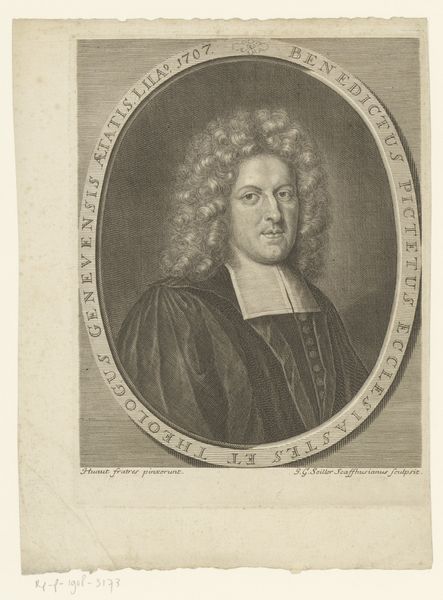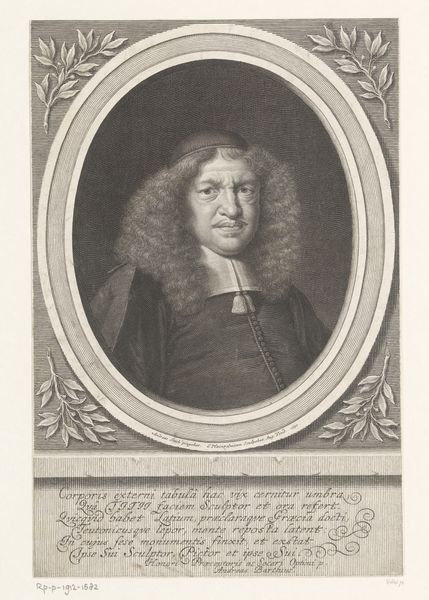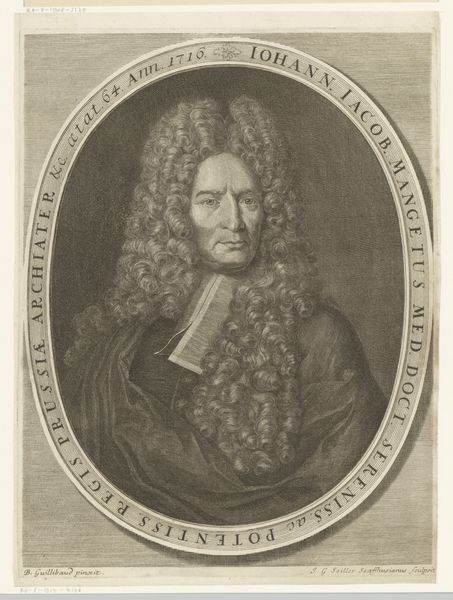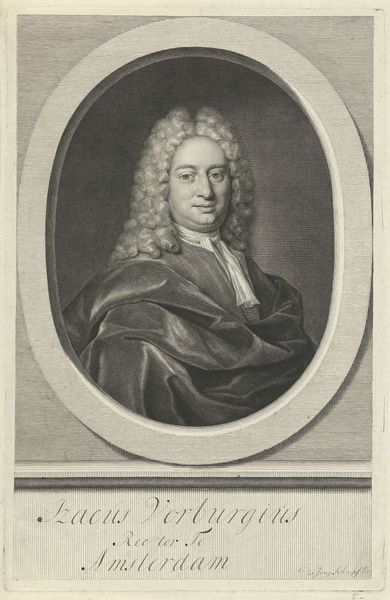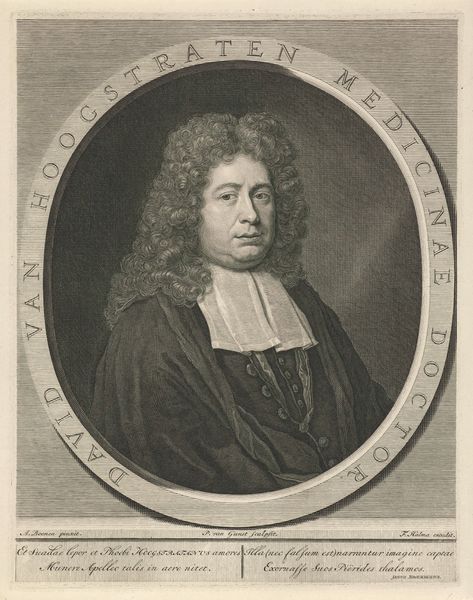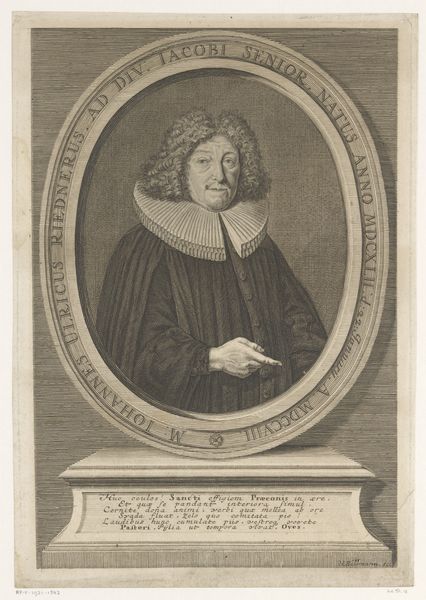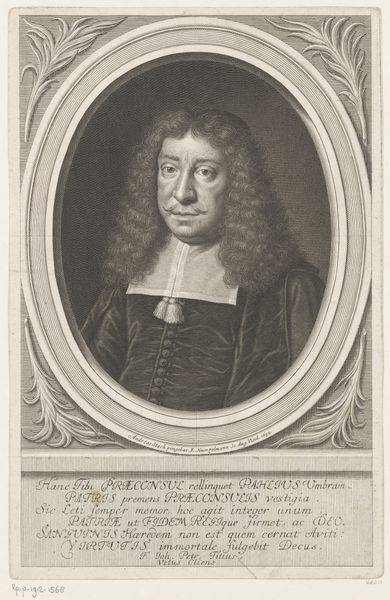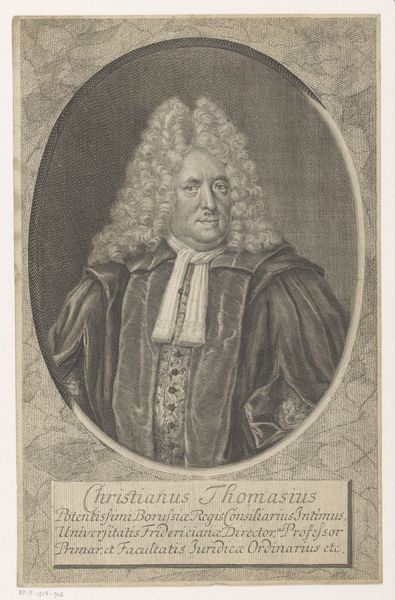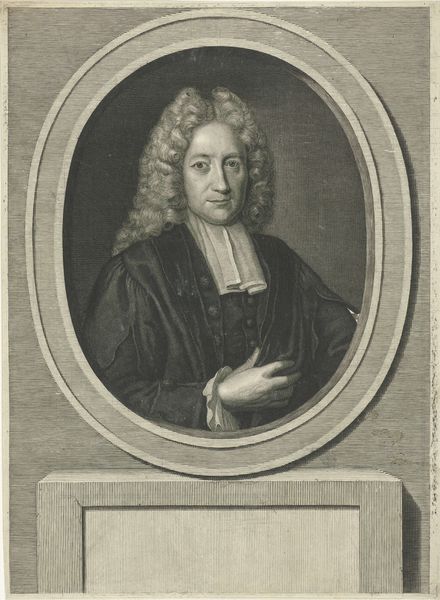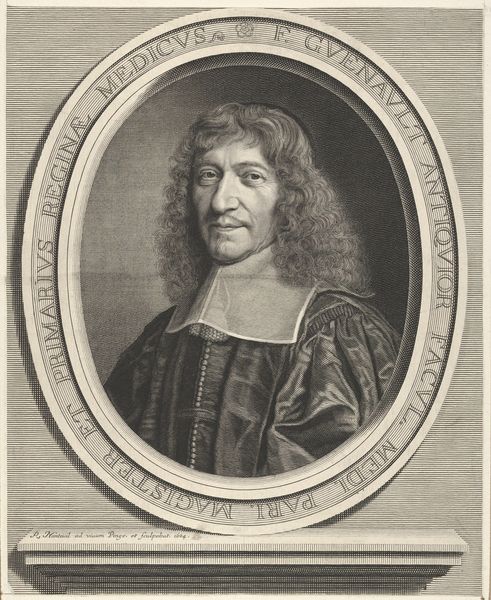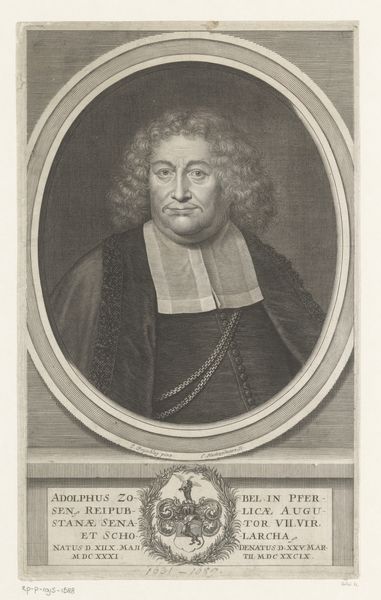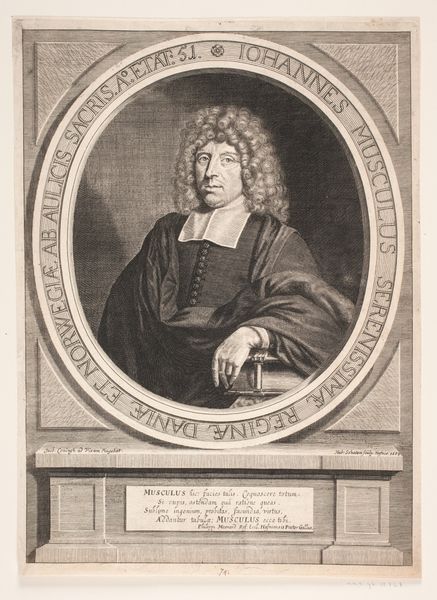
#
wedding photograph
#
photo restoration
#
old engraving style
#
film poster
#
historical photography
#
portrait reference
#
old-timey
#
yellow element
#
19th century
#
advertising for male clothe
Dimensions: height 318 mm, width 231 mm
Copyright: Rijks Museum: Open Domain
Editor: So, here we have Pieter van Gunst’s “Portret van Johannes Texelius,” dating from between 1719 and 1731. It's currently held at the Rijksmuseum. I find it really intriguing how formal and imposing it feels, with all that inscription around the oval frame. What historical narratives do you think this piece speaks to? Curator: Well, let’s start with Texelius himself. He was a professor of theology and a pastor in Rotterdam during a time of significant social and religious upheaval. This portrait isn't just an image; it’s a statement of power and authority, meticulously crafted and circulated, most likely, amongst a select audience. How does his attire and the detailed wig contribute to this impression? Editor: The wig and the robe definitely emphasize his status and learning, maybe even linking him to a tradition of scholarship and religious leadership. Was portraiture like this a way to reinforce the existing social hierarchy? Curator: Absolutely. In a society deeply stratified by class and religious affiliation, visual representations like this played a crucial role. Consider how the Latin inscription surrounding the image positions him within a classical, learned tradition. It’s a performance of power through intellect and piety. How might contemporary audiences have interpreted these symbols? Editor: I imagine they would have recognized those symbols immediately, understanding his position in society and perhaps even the values he represented. But it makes me wonder about those outside that circle – those excluded from that power structure. Curator: Precisely! What stories are not being told through this portrait? Whose voices are silenced or marginalized by this carefully constructed image of authority? Recognizing the absences can often reveal the most about the dominant ideology of the time. Editor: That makes me think differently about it. It's not just a portrait; it's a carefully curated piece of propaganda for the elite. Curator: Exactly. And by recognizing its function, we can begin to unpack its significance within the broader context of social and political dynamics. Editor: I learned so much about the historical importance and meaning of portraiture today. Thank you! Curator: Likewise. It's rewarding to view artworks as more than just pretty pictures, but as cultural artifacts with potent messages.
Comments
No comments
Be the first to comment and join the conversation on the ultimate creative platform.
